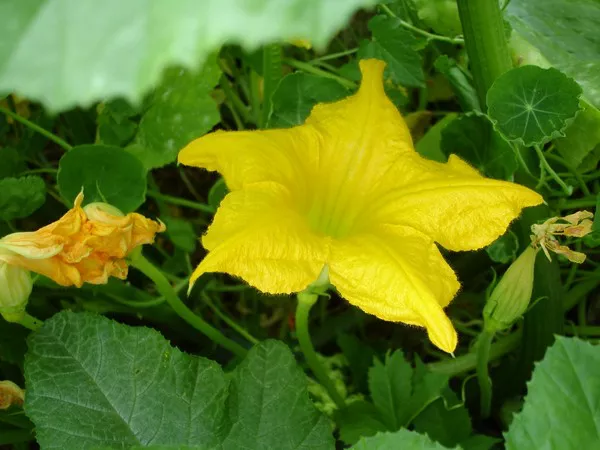In the world of indoor gardening, not all plants are created equal. Some require meticulous care and attention, while others thrive on neglect. For those who lack a green thumb or simply lead busy lives, selecting hardy houseplants that can withstand a little neglect can make all the difference. In this article, we’ll explore the top 10 plants that are virtually indestructible, perfect for both experienced gardeners and beginners alike.
Top 10 Plants You Can’t Kill
1. Snake Plant (Sansevieria trifasciata)
Known for its striking upright leaves and air-purifying properties, the snake plant tops the list of hard-to-kill houseplants. Native to West Africa, this resilient plant can tolerate low light conditions and infrequent watering, making it an ideal choice for busy individuals. With its architectural foliage and minimal care requirements, the snake plant is a staple in any indoor garden.
2. ZZ Plant (Zamioculcas zamiifolia)
The ZZ plant is another low-maintenance houseplant that thrives on neglect. With its glossy green leaves and upright growth habit, this tropical plant adds a touch of elegance to any space. Native to Eastern Africa, the ZZ plant can tolerate low light and irregular watering, making it an excellent choice for beginners or those with busy schedules. Plus, its ability to purify the air makes it a welcome addition to any indoor environment.
3. Pothos (Epipremnum aureum)
Pothos, also known as devil’s ivy, is a versatile and resilient houseplant that is nearly impossible to kill. With its heart-shaped leaves and trailing growth habit, pothos adds a pop of greenery to shelves, tabletops, and hanging baskets. This hardy plant can tolerate a wide range of light conditions, from low to bright indirect light, and requires minimal watering. Plus, pothos is known for its air-purifying properties, making it a popular choice for homes and offices alike.
4. Spider Plant (Chlorophytum comosum)
The spider plant is a classic houseplant known for its arching leaves and spider-like offsets, or “pups.” Native to South Africa, this resilient plant thrives in a variety of light conditions, from bright indirect light to low light. Spider plants are also tolerant of irregular watering and can even withstand periods of drought. With its air-purifying qualities and easy care requirements, the spider plant is a must-have for any indoor garden.
5. Peace Lily (Spathiphyllum spp.)
The peace lily is prized for its elegant white flowers and lush green foliage, making it a popular choice for indoor gardens. Native to tropical regions of the Americas and Southeast Asia, this hardy plant can tolerate low light conditions and infrequent watering. Plus, peace lilies are known for their ability to remove toxins from the air, making them a welcome addition to any indoor environment. With proper care, peace lilies can bloom year-round, adding beauty and serenity to your home.
6. Rubber Plant (Ficus elastica)
The rubber plant is a striking houseplant known for its glossy, dark green leaves and upright growth habit. Native to Southeast Asia, this resilient plant can tolerate low light conditions and infrequent watering, making it an excellent choice for beginners. Rubber plants are also known for their air-purifying properties, making them a popular choice for homes and offices. With proper care, rubber plants can grow into impressive specimens, adding drama and elegance to any indoor space.
7. Aloe Vera (Aloe barbadensis)
Aloe vera is not only prized for its medicinal properties but also for its resilience as a houseplant. Native to North Africa, this succulent plant thrives in bright, indirect light and requires minimal watering. Aloe vera is also known for its ability to purify the air and remove toxins, making it a welcome addition to any indoor environment. Plus, the gel inside the leaves can be used to soothe sunburns and minor skin irritations, adding to its appeal as a versatile houseplant.
8. Jade Plant (Crassula ovata)
The jade plant, also known as the money plant, is a popular succulent known for its fleshy leaves and upright growth habit. Native to South Africa, this resilient plant can tolerate a wide range of light conditions, from bright indirect light to low light. Jade plants are also tolerant of infrequent watering and can withstand periods of drought. With its easy care requirements and symbolic significance, the jade plant is a favorite among indoor gardeners.
9. Cast Iron Plant (Aspidistra elatior)
True to its name, the cast iron plant is nearly indestructible, making it an ideal choice for those with a less-than-green thumb. Native to East Asia, this hardy plant can tolerate low light conditions and infrequent watering, making it perfect for offices and other indoor environments. With its dark green leaves and upright growth habit, the cast iron plant adds a touch of elegance to any space while requiring minimal care.
10. Chinese Evergreen (Aglaonema spp.)
Rounding out our list is the Chinese evergreen, a versatile and resilient houseplant that thrives in low light conditions. With its attractive foliage and air-purifying qualities, the Chinese evergreen is a popular choice for indoor gardens. Native to tropical regions of Asia, this hardy plant can tolerate a variety of light conditions, from low to bright indirect light. Chinese evergreens are also tolerant of infrequent watering and can withstand periods of drought, making them ideal for busy individuals or those new to gardening. With their ability to thrive in virtually any indoor environment, Chinese evergreens are a staple in homes and offices around the world.
How to Care for Hardy Houseplants
While the plants listed above are known for their resilience and ability to withstand neglect, they still require some basic care to thrive. Here are a few tips for keeping your hardy houseplants healthy and happy:
Light: Most hardy houseplants prefer bright, indirect light, but they can also tolerate low light conditions. Place your plants near a window where they will receive filtered sunlight throughout the day.
Watering: While hardy houseplants are more forgiving of underwatering than overwatering, it’s still important to water them regularly. Check the soil moisture levels before watering and only water when the top inch of soil feels dry to the touch.
Temperature: Most hardy houseplants prefer temperatures between 65-75°F (18-24°C). Avoid placing your plants near drafty windows or heating vents, as sudden temperature changes can stress the plant.
Humidity: While not all hardy houseplants require high humidity levels, some, like peace lilies and spider plants, may benefit from occasional misting or placement on a pebble tray filled with water to increase humidity.
Fertilizing: Hardy houseplants generally do not require frequent fertilizing, but a diluted liquid fertilizer can be applied once a month during the growing season to promote healthy growth.
Pruning: Regular pruning can help keep your hardy houseplants looking neat and tidy and encourage new growth. Remove any dead or yellowing leaves, as well as any spent flowers or stems.
Repotting: As your hardy houseplants grow, they may outgrow their pots and become root-bound. Repotting them into a slightly larger container with fresh potting soil every 1-2 years can help promote healthy growth.
By following these simple care tips, you can ensure that your hardy houseplants remain healthy and vibrant for years to come, adding beauty and greenery to your indoor space without requiring a green thumb.
Conclusion
Hardy houseplants are a great choice for both experienced gardeners and beginners alike, offering beauty and greenery without the need for meticulous care. Whether you’re looking to add some greenery to your home or office, the plants listed above are sure to thrive in virtually any indoor environment. With their resilience and versatility, these indestructible plants are a welcome addition to any indoor garden, bringing joy and tranquility to those who admire them.
You Might Be Interested In:


























